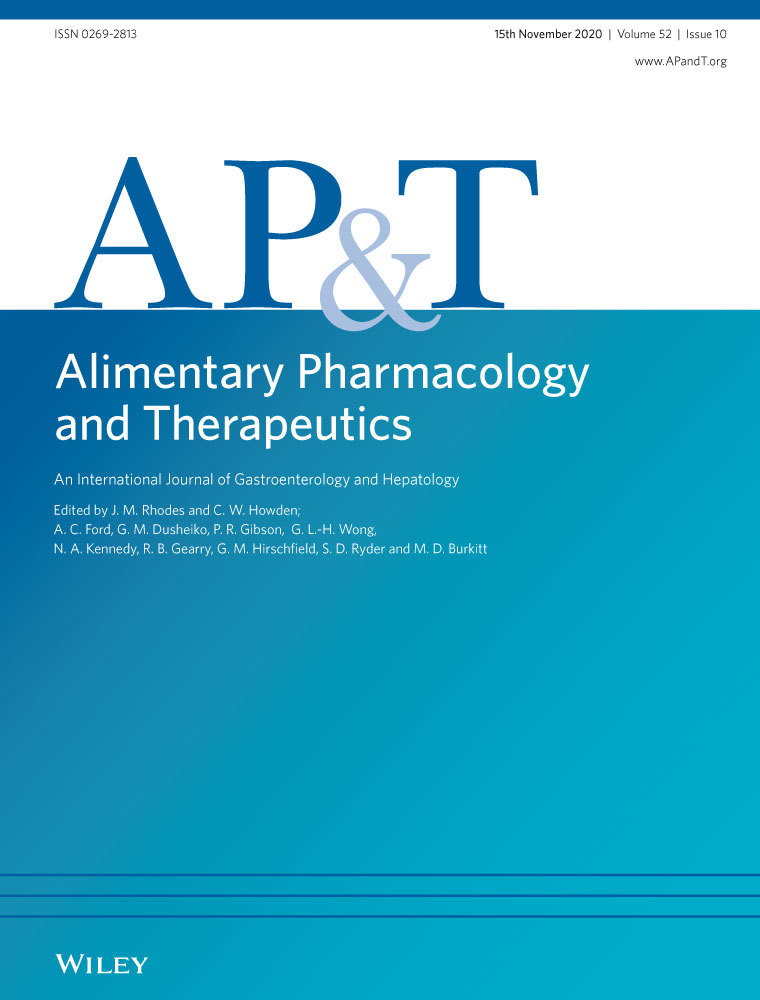Letter: rationalising aminosalicylates in inflammatory bowel disease
Abstract
LINKED CONTENT
This article is linked to Chapman et al papers. To view these articles, visit https://doi.org/10.1111/apt.15771 and https://doi.org/10.1111/apt.16113
EDITORS,
We read with interest the review article by Chapman et al on withdrawal of 5-aminosalicylates in inflammatory bowel disease.1 The authors have eloquently summarised the current evidence and proposed an algorithm for the safe discontinuation of aminosalicylates.
Specifically, the authors have highlighted the emerging evidence in favour of withdrawal of aminosalicylates in patients with active disease and recently commenced on biologic therapy. Further to this, we have recently demonstrated in a large retrospective study that 5-ASA therapy can also be withdrawn safely after patients have achieved remission following escalation to immunomodulators and/or biologics with significant cost savings (median $USD1500 per patient per year in reduced medication cost).2 Given the potential reductions in cost and the pill burden to patients, we would also advocate a trial of 5-ASA withdrawal amongst patients achieving endoscopic or clinical remission, including those who fall in Chapman et al.’s proposed high-risk category, given that time to remission does not appear integral to the safety of treatment withdrawal. Regardless, aminosalicylates can always be safely reinstituted if warranted, without the risk of immunogenicity.
In addition, aminosalicylates are often continued in patients escalated to immunomodulators or biologics because of their touted chemopreventive properties.3 Yet the data supporting a unique role for aminosalicylates in this context are underwhelming and their role in the observed reduction in colitis-associated cancer incidence in recent years is most improbable, given long-term adherence to aminosalicylates is typically poor and their widespread use predates the observed reduction in cancer risk.4 The growing availability and reducing cost of biologic agents, the most effective therapy for reducing inflammation and achieving remission, has seen their application to more patients with IBD, with more appropriate dosing and perhaps most critically, earlier in the disease course. Inflammation appears to be the main driver of colitis-associated cancer through DNA damage, activation of procarcinogenic pathways and inactivation of tumour suppressor genes.5 Hence, it is likely that earlier treatment with biologics resulting in longer, more durable remission largely explains the reduction in CRC incidence rather than a specific chemoprotective effect related to aminosalicylates. Therefore, when clinically indicated, introduction of biologics should be encouraged with reflexive discontinuation of aminosalicylates and no detriment to chemoprevention.
We commend Chapman et al. for their proposed guide which should assist clinicians in the safe withdrawal of aminosalicylates and we eagerly anticipate further work to address the next step, that is, the safe withdrawal of immunomodulator and biologic therapies in IBD.
ACKNOWLEDGEMENTS
Declaration of personal interests: Abhinav Vasudevan has received financial support to attend educational meetings from Ferring. Daniel van Langenberg has served as a speaker and/or received travel support from Takeda, Ferring and Shire. He has consultancy agreements with Abbvie, Janssen and Pfizer. He received research funding grants for investigator-driven studies from Ferring, Shire and AbbVie. Steven Nicolaides has no personal interests to declare.




